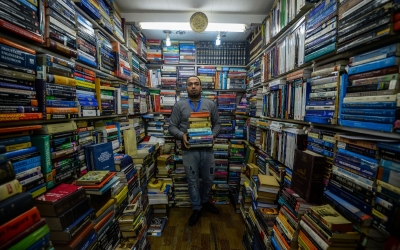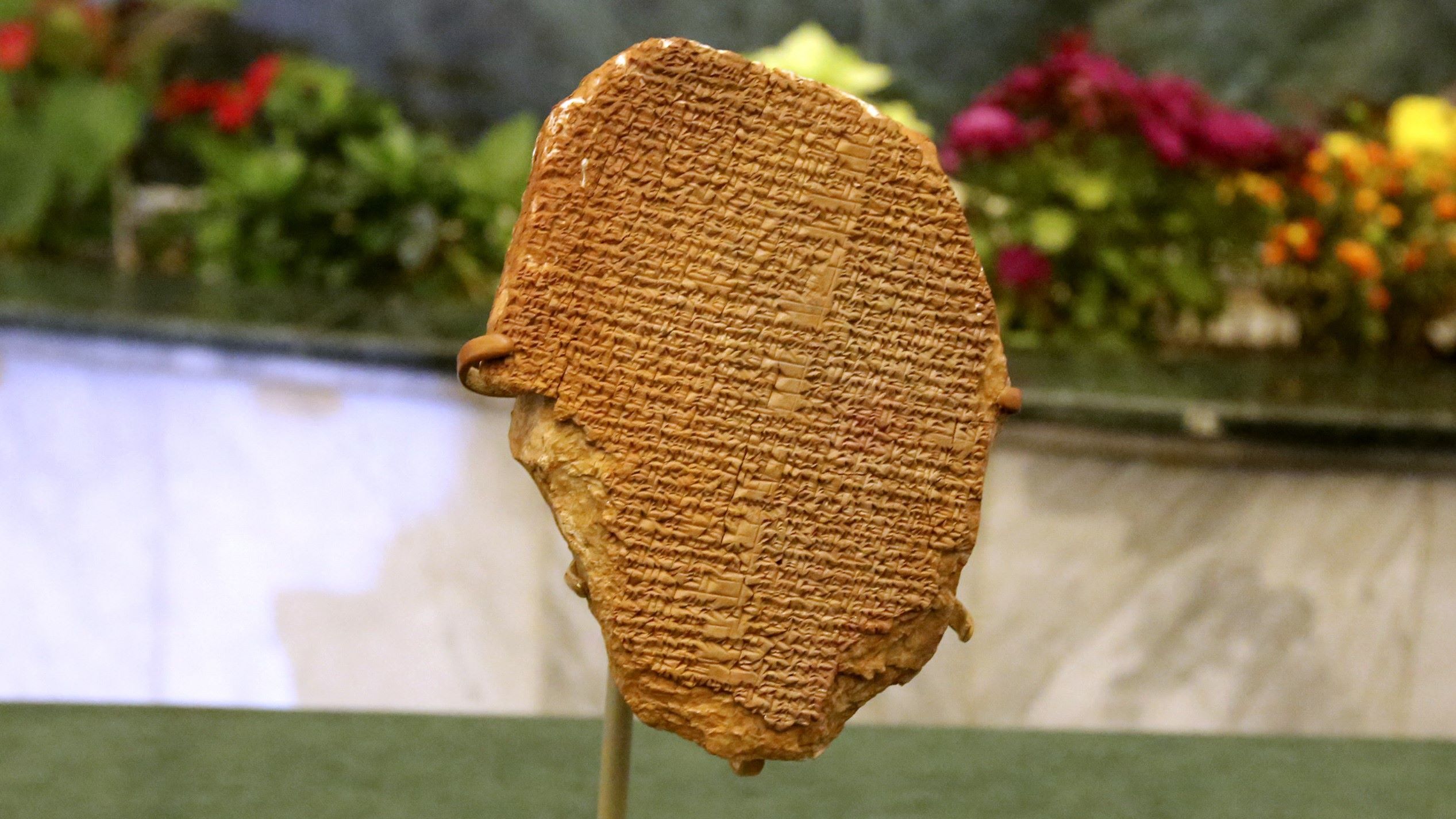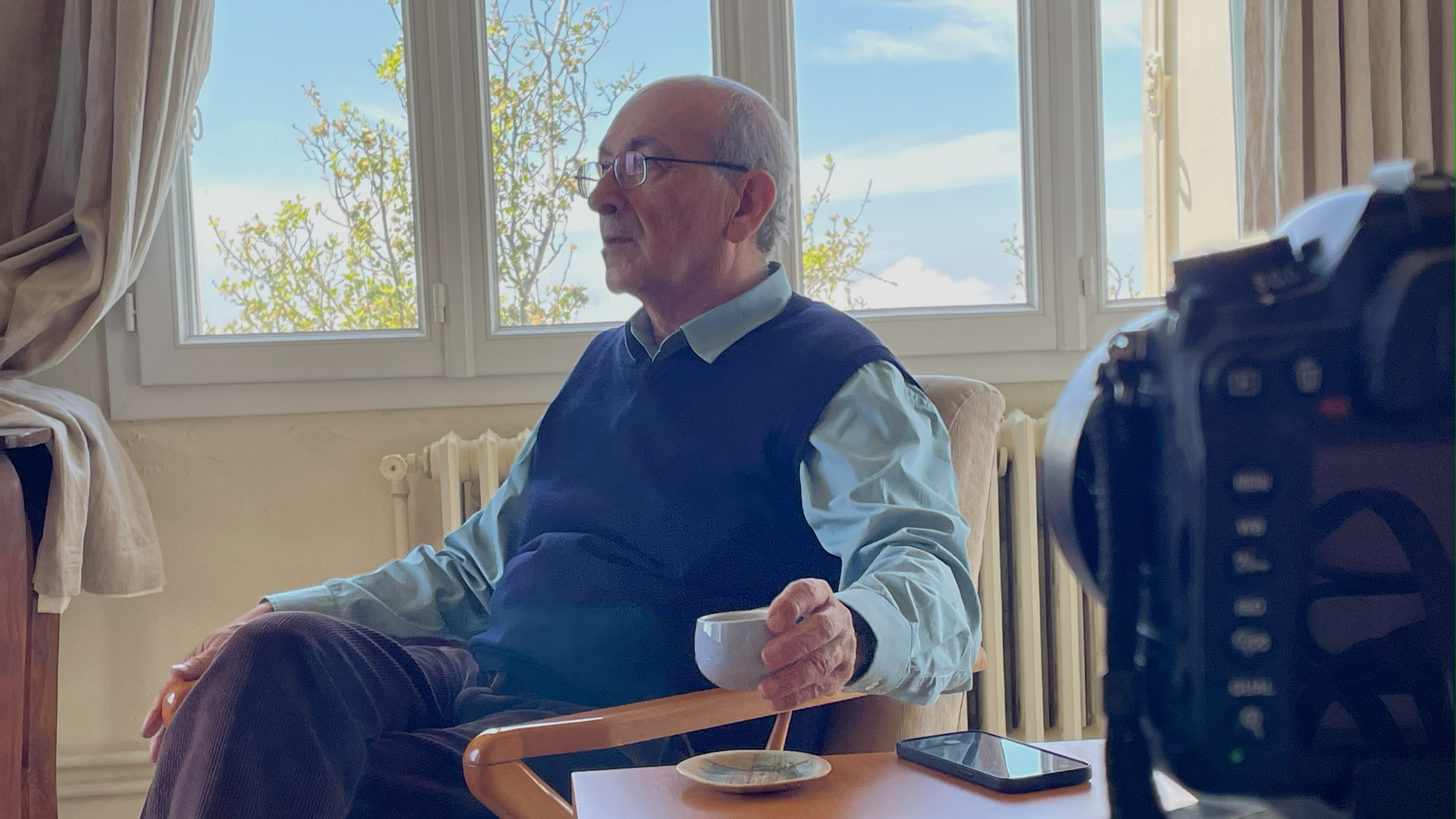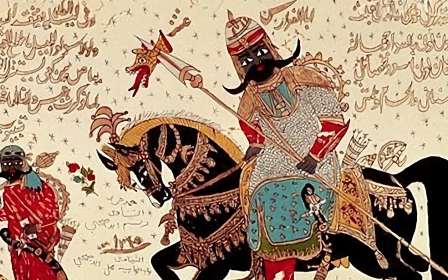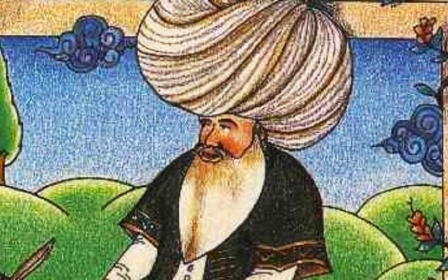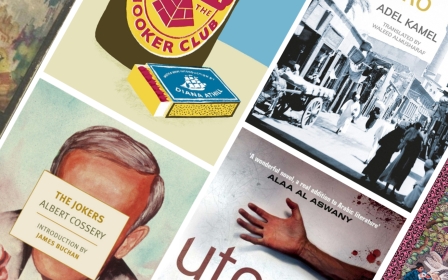The Other Side of the Shadow: Lebanese writer Rachid el-Daif turns to fairytales
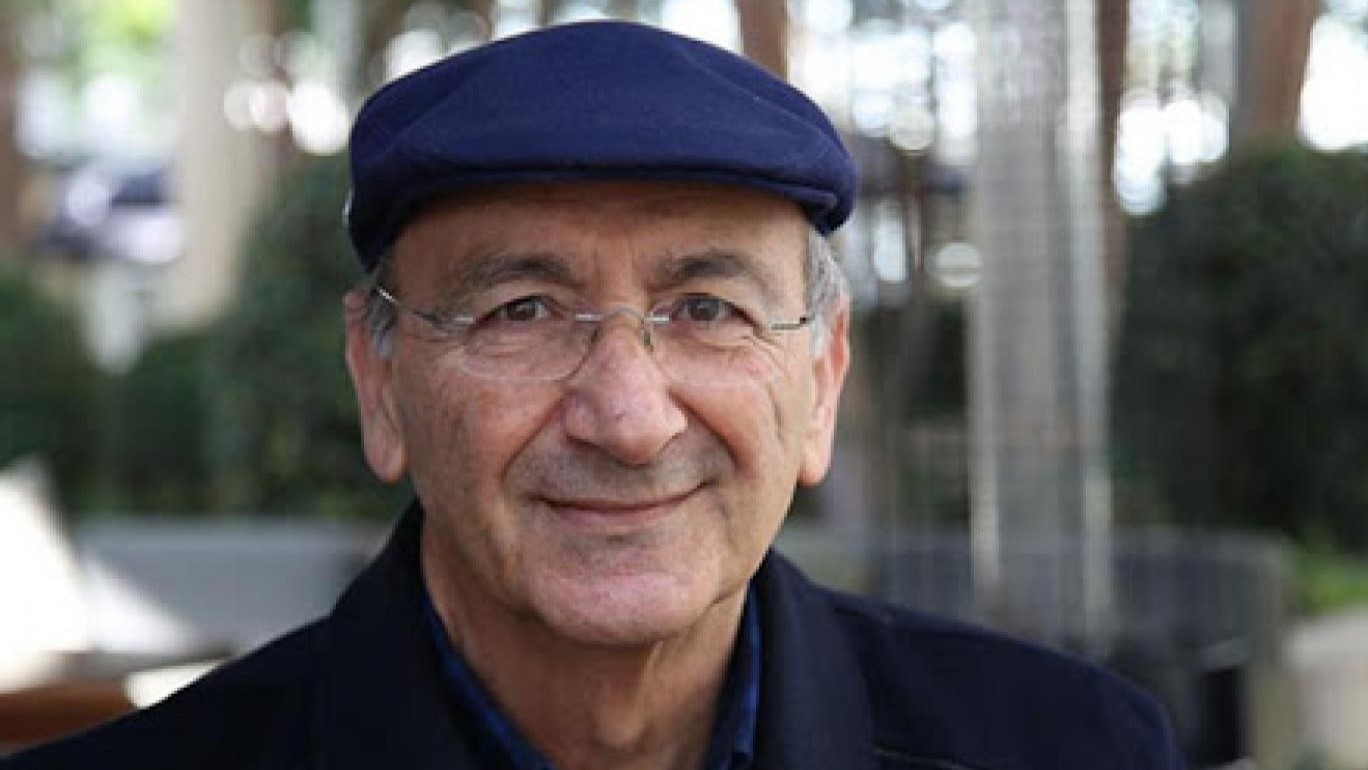
Looking at the Lebanese novelist Rachid el-Daif’s work, it’s easy to view his latest two novels as a pivot into a new genre of modern Arabic fiction: mythology and fairytale. But that’s only part of the story.
The acclaimed poet-turned-novelist’s interest in surrealism can be traced back decades. In his 1983 short-story collection Unsi Plays with Rita he opens with “The Birth”, a story about a parentless child who meets a man while wandering the streets and “dissolves inside him”.
When this man hugs a woman, “she becomes pregnant” and has a boy called Unsi. Alas, the original parentless boy is now reincarnated. But what’s important here is the novelist’s early fascination with the fantastical - how time and space and laws of nature can be conquered.
Daif first came to prominence for his novels on Lebanon’s civil war, between 1975 and 1990, earning his place among the most important modern Arabic writers. He is often cited alongside other popularly translated Lebanese writers, such as Hanan al-Shaykh, Hassan Daoud and Elias Khoury, with daring and subversive novels that probe the relationship between private and collective memory, and confront the absurdity of sectarian politics, war and violent masculinity.
In a region where many intellectuals have a political affiliation and where writing is a critical instrument and extension of politics, Daif stands out with his aversion to politics.
New MEE newsletter: Jerusalem Dispatch
Sign up to get the latest insights and analysis on Israel-Palestine, alongside Turkey Unpacked and other MEE newsletters
In fact, critics have interpreted his novel Dear Mr Kawabata (translated into eight languages) as his mea culpa on behalf of the Lebanese Communist Party for its double standards during the war, and a disavowal of a teleological view of history.
Details in this novel, and others, have autobiographical echoes, often with a protagonist called Rachid.
Given this, many were incredulous to learn that Daif has now written a fairytale novel. “Some even told me, ‘Did you really write this?’” he told Middle East Eye.
The Other Side of the Shadow (published in autumn 2022) treads on ancient grounds, but it can be read as a contemporary social critique of the pervasiveness of religious thought in political parties across Arab society and the world.
“I’m not against personal faith. I’m against the militarisation of religion in Lebanon, the Arab world and the world in general,” he told MEE.
The idea is again a wave of implicit anger towards the exclusionary interpretation of religion as monopolised by political parties, an awareness Daif gained during Lebanon’s civil war.
“Lebanon is a reflection of the world,” he often says. But readers must also be wary: Daif never writes with a specific message he hopes to deliver. Rather, it is the multitude of readings that render his work so rich.
The Other Side of the Shadow
In ancient times, during the fracturing of Pangea, a young, unmarried king dreams that his future wife lies naked on a tree branch.
When he calls her, she ignores him. He awakes disturbed, mostly because of his imaginary wife’s dismissal. He is, after all, the master of the world, of time and night and day; everything and everyone bows to him. “How does his wife not respond, even in his dream?”
This is a self-fulfilled prophecy revealed before us in the opening pages. The dream interpreters warn the king not to get married - that, as they foresee in this dream, his imaginary wife’s refusal is a sign that she will inevitably commit adultery; her hiding in the tree is a metaphor of shame.
But the stubborn king does not heed their advice. Instead, he believes he can control his fate and marries a woman with unrivalled wonder, “a woman unlike women”, so spectacular as to be beyond the desires of men.
As a way to test her purity, the king locks her in a room in his castle, removing her contact with the outside world. All goes according to plan, until a cloud transforms into a butterfly and impregnates her one day, when she is out for a walk in the castle’s garden.
Knowing that she will inevitably be accused of being a jinn, an evil spirit able to appear in human and animal form and to possess humans, the queen secretly escapes, wandering for days before arriving at an oasis.
The indignant, power-craving king turns even angrier upon learning of her disappearance, and launches a metaphysical battle against the queen, her newborn son Adiya, and the queen’s mother, who is still in his kingdom and whom he tortures to the point of death.
The real conflict, however, is in the fact that Adiya disappears at a young age, ostensibly kidnapped by a snake sent by the king. Here begins a painful story of a mother's yearning for her infant, who is separated from her for over a decade.
When they are at last reunited, the son sees in his mother’s eyes “the other side of the shadow”.
United with the tyrannical king and long-lost son amid a parched earth, the queen’s final, merciful words before her death can be interpreted in many ways. “Do not bow to my memory, nor to your son after me, and prevent him from bowing down to you.”
The queen then transforms into an incandescent being amid total darkness. Chaos reigns. By placing the imperative “do not bow” as the last words of the queen, is Daif responding to narrow religious tradition in favour of a view that centres the human? Maybe he is arguing that the child inside the woman’s womb is not a gift of the father after all? These are questions readers may have, and for which the ending provides no balm.
Resistance to patriarchal norms
The novel is something of a sequel to Daif's previous work, Princess and the Ring. Published in 2019 and set in historic Palestine, this tells the story of a princess who wishes to find pure love and transcend time.
Both works are products of a culture and region that produced the three monotheistic religions; both display the topography of deserts, oases, olive, cottonwood, juniper and cedar trees, with references to jinn and with clear religious allegories.
In this new, exhilarating novel the queen can be interpreted across traditions.
'She is a princess but an active princess, one who changes her fate, who fabricates it'
- Fadhila el-Farouk, critic
She could symbolise Fatima, the daughter of the Prophet Muhammad and the wife of Ali, and the Virgin Mary for Christians. I read it as an allusion to Aisha too, the Mother of the Believers, the prophet’s third wife, who was accused of committing adultery (like the queen in the story) but was then acquitted when a Quranic verse came down and proclaimed her innocence.
Returning to the idea of a multitude of readings, Fadhila el-Farouk, the respected Algerian literary critic who moved to Beirut in the 1990s, said in a television interview that Princess and the Ring astonished her because of its uniquely feminist lens. “We don’t have stories about princesses in classical Arabic literature. She is a princess but an active princess, one who changes her fate, who fabricates it, who strives to protect her kingdom.”
I believe the female protagonist’s agency and resistance to patriarchal norms around marriage and submission come across as even more true in Daif's latest novel.
Yet unlike many of his novels that were not taught in schools because of scenes that some critics have described as “crude", these two are exceptionally appropriate for both young and mature readers.
Drawing on classical heritage
Daif's novels have often been inspired by classical Arabic literature and poetry. Continuing this tradition, for The Other Side of the Shadow and Princess and the Ring, he examined Arab, Greek and Mesopotamian mythology (Gilgamesh), books on dreams (tafsir al-ahlam), biographies, travelogues, stories of prophets (Ibn Kathir), sacred religious texts (the Quran, Torah and Bible) and mysticism books, to reach into the depths of his imagination - where the mind meets the heart - and produce two original works. And, dare I say, a new genre in contemporary Arabic letters.
Every reader will take and learn something from these novels (returning to the etymological sense of the word for literature in Arabic, adab).
For all these reasons, they appear to have cast a spell on their Arabic readers, and translating them should and must be done. The biggest difficulty is translating style. One Egyptian critic went so far as to consider the style of The Other Side of the Shadow as like a chapter from the Book of Genesis.
In the past, Daif has referred to his style in these two novels as just as important as its characters. How, then, is a translator to convey the mythological stylistic tone of a text that is at once rooted in classical Arabic but at the same time poetically simple and modern?
Although, admittedly, Daif treated me kindly during my two-year stay in Beirut, I first grew to know him by reading his works. It was almost two years ago when I interviewed him on the state of the country, in the wake of the currency crisis and the Beirut port explosion.
I will never forget the sunken look in his eyes. For a man who has lived through several volcanic periods in Lebanon’s history, I was surprised when he told me: “This current period is the most despicable of them all.”
Now, I am not so surprised. With 80 percent of the population plunged into poverty, this seems to be the consensus among the majority-dominated class.
Shortly after the Soviet Union’s satellite Sputnik orbited the earth in 1957, the philosopher Hannah Arendt wrote The Human Condition as a lament to our desire to transcend the planet and all the problems we have wrought upon it.
Perhaps, then, a return to mythology and fairytales is this writer’s way to escape the ugliness of Lebanon’s present, a way for us to find short-lived shelter from the magnitude of the storm.
Middle East Eye delivers independent and unrivalled coverage and analysis of the Middle East, North Africa and beyond. To learn more about republishing this content and the associated fees, please fill out this form. More about MEE can be found here.


